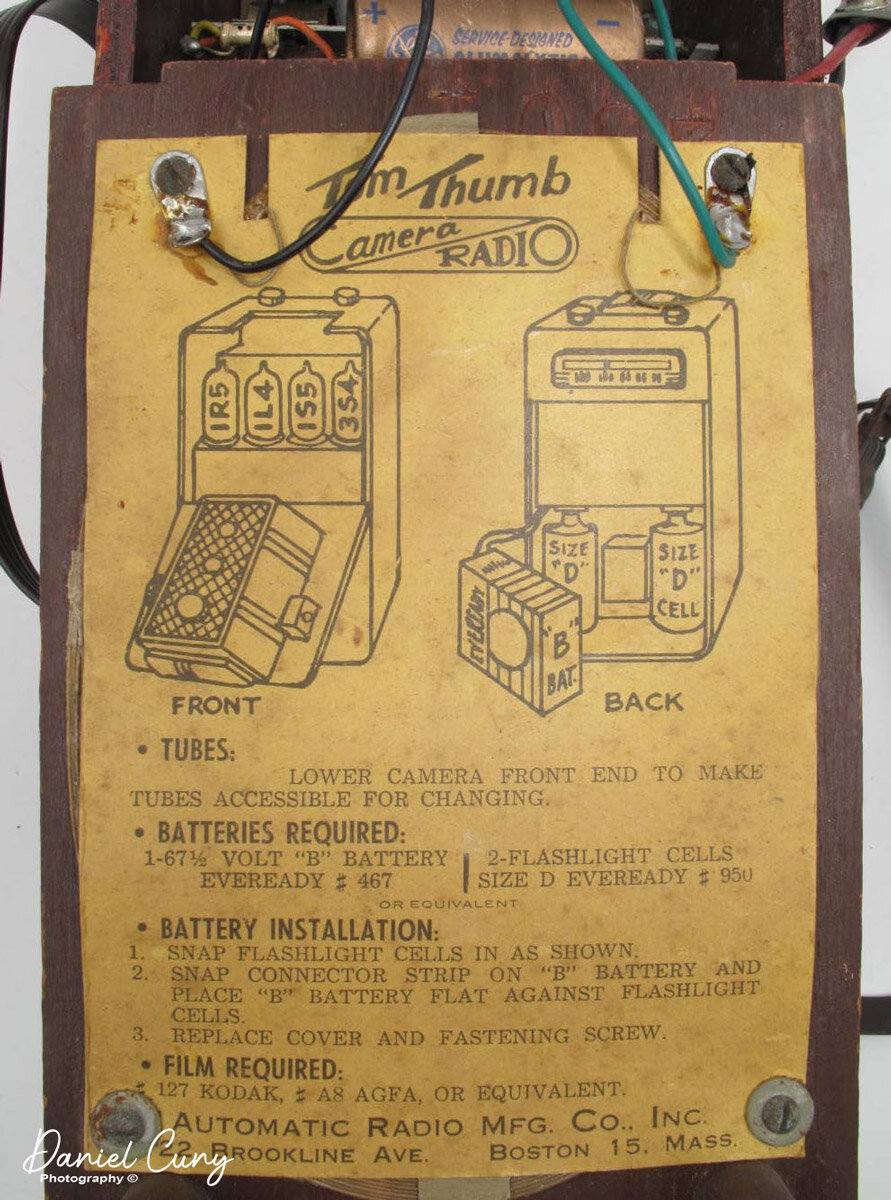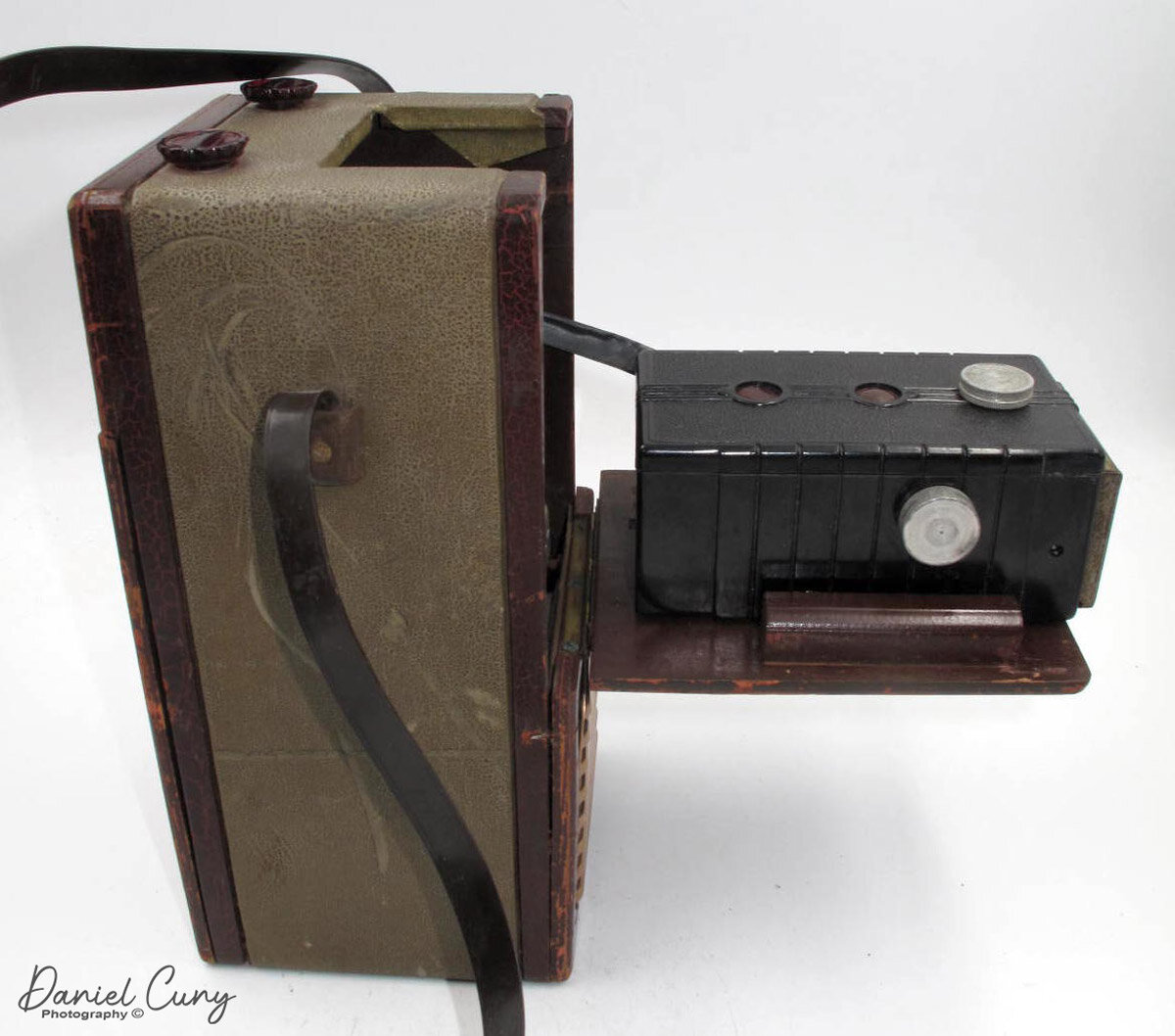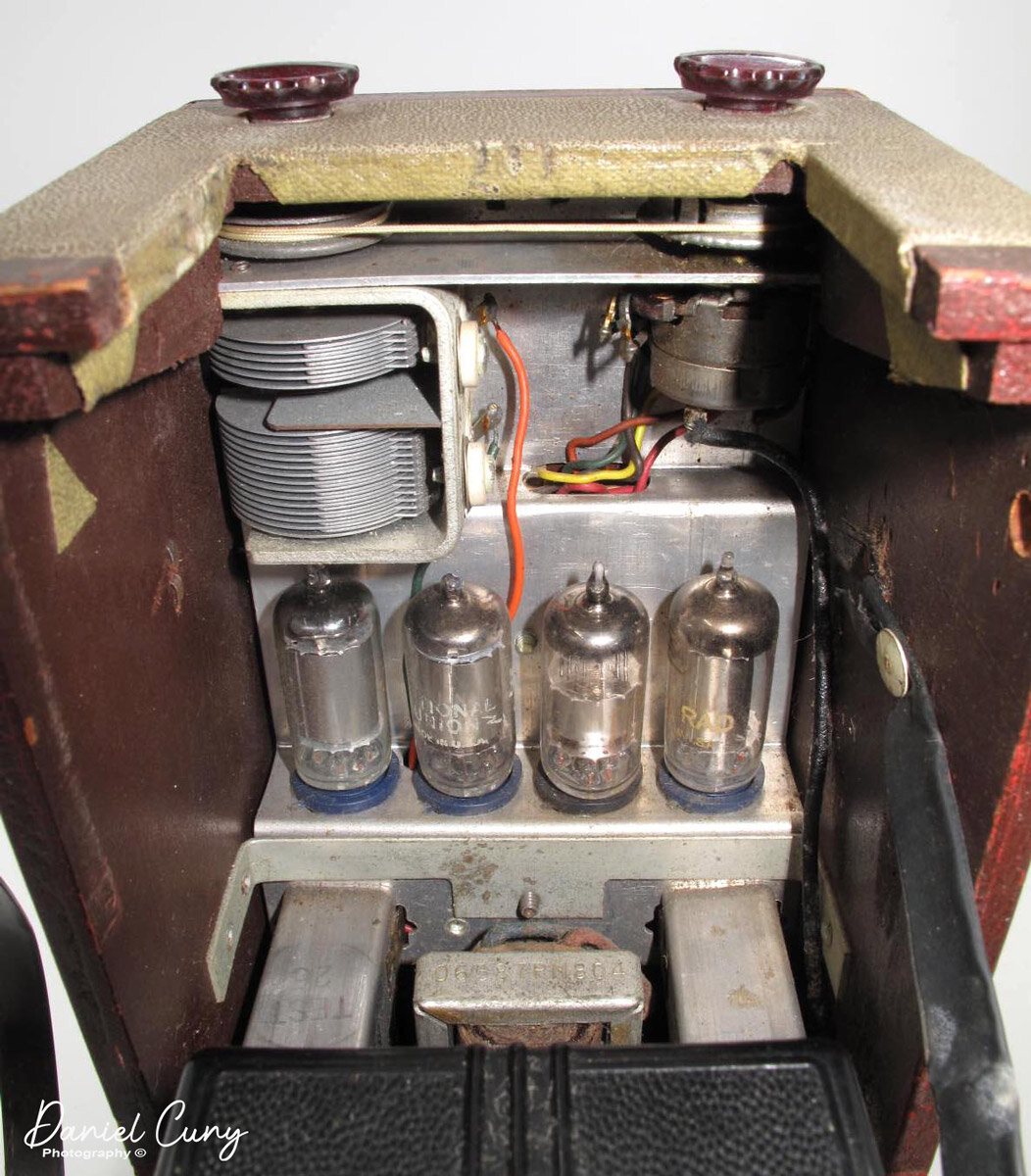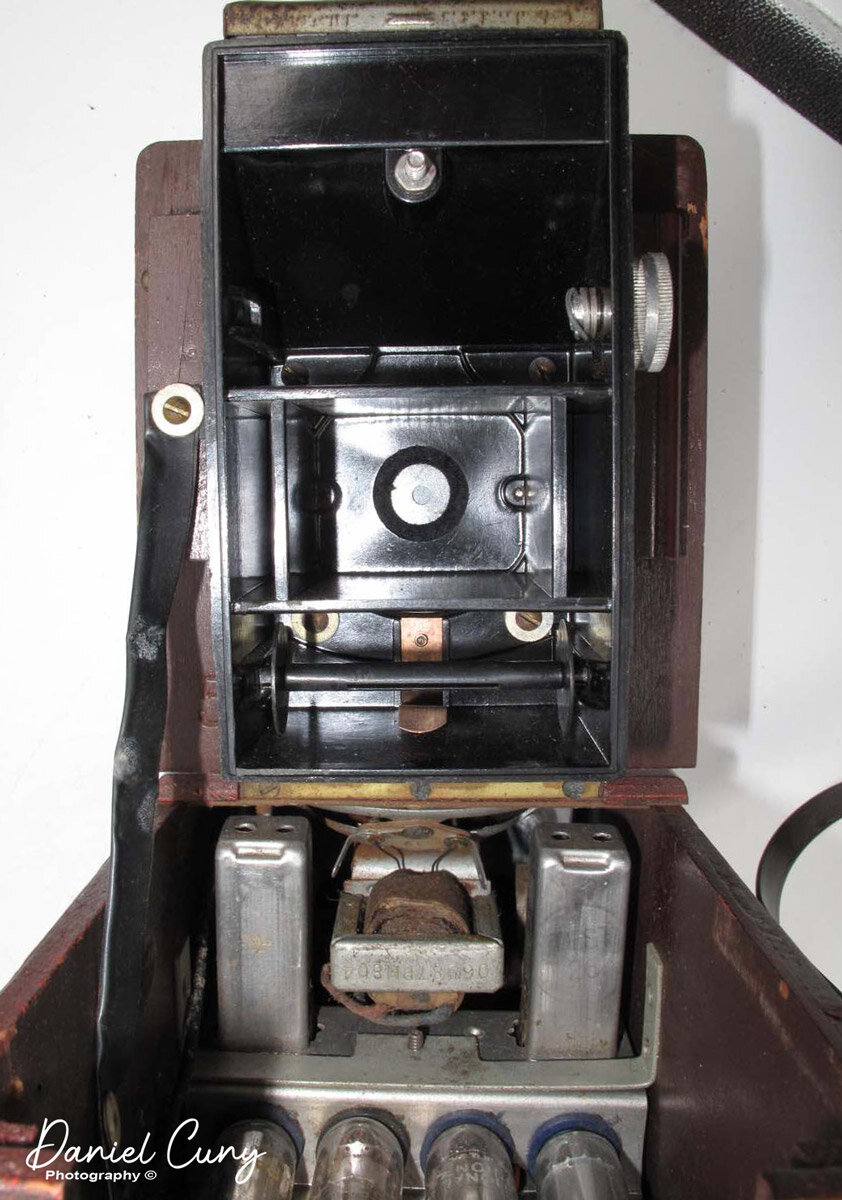As I looked at some of the cameras on my shelf, I wonder what I wanted to write about in this week's blog. The Tom Thumb Camera Radio caught my eye and felt this would be a fun camera to tell you about. Like the Kowa Ramra, which I wrote about previously, this camera, radio combination, is an earlier version using tubes instead of transistors.
Front view, Tom Thumb Camera Radio
Company Background
Automatic Radio Manufacturing Company of Boston, MA. manufactured the Tom Thumb Camera Radio in 1948. They started in 1920 and continued making radios until 1957. The company made radios of wood, Bakelite, and two models of Catalin. They are well known for their line for Tom Thumb Radios, which in the 1930s were some of the smallest made during the time. Another funny thing about this particular camera radio combination is an almost identical item named the Cameradio produced by Universal Radio Manufacturing Company of Elmira, NY. The only difference I can see is the name of the camera and the company around the lens. I found an image of Cameradio on the Collectiblend website, which you can see here.
My Camera/Radio
My Tom Thumb Radio Camera measures 9.5" tall, including the radio knobs and camera finder on top by 4.5" wide, by 4.75" deep, including the front lens. It's relatively heavy, weighing 3 lb. 6 oz without the 2-"D" cells and Eveready 467 batteries needed to power the AM frequency radio. Suppose you factor in 10 oz for the "D" cell batteries and 12 oz for the 467 battery, that just under 5 pounds for the radio and camera.
The radio portion of the camera radio is a four-tube radio with a speaker on the unit's bottom front, hidden by the gold-colored grill. On top of the camera-radio is the on/off and volume knob on the left. The tuner knob is on the right. A 7" panel of the back comes off the camera radio by a screw on the bottom. Removing the back panel allows you to install the two "D" batteries along with the 67.5v 467 battery. The 467 battery attaches by a clip similar to a 9v battery, but just more massive, and fits in between the two "D" batteries, which you can see in the photos. Above the removable panel on the back of the camera is the AM tuner. The Camera Radio comes in a wooden box, covered with red crackle finish on the front and rear and tan coverings on the sides. There is also a thin plastic strap for carrying.
Built into the camera radio is a plastic, pseudo twin lens camera that takes 127 film. On the lens itself, it states f.57.5mm on the bottom and Maestar Lens on top. I'm guessing the camera has a fixed 75mm f5 Maestar lens. The camera radio also has an extremely simple spring shutter with two settings, "Inst." and "Time." Inst. is for regular shooting while "Time" is for long or time exposed photos. On top of the camera radio is the pull-up viewfinder. This nothing more than a couple of pieces of bent shiny metal that forms a waist-level finder. On the back of the one I own, it's stamped, "Pat Pend."
The camera portion and film loading is another oddity. Just above the front speaker is a hinge. If you pull the viewfinder portion forward, the camera's front pulls down and exposes its back. A screw holds on the back in the center, top area of the camera. You unscrew the screw and take the camera back off to load the 127 size film. Once loaded, push the top back into the radio portion, and it snaps back into place. There is no way to see the back of the camera until you pull the camera down. You'll need to do this to advance the film after each photo. Not the most convenient, but it works. The camera seems like a very "Novelty" style camera that I've seen with so many different names. I guess the camera manufactured by Utility Mfg Co. or a similar company.
If you're interested in the schematic and instructions, you can find them here.
Conclusion
I can imagine the people that bought this were families that wanted to listen to their favorite music while at the beach, camping, or at a family get together and had the convenience of a camera in the same place. The Tom Thumb Camera Radio appears to have been a very modern and futuristic product for the after World War II families.
Thank you for taking a few minutes to read this post about a product of the future that didn't catch on. I'd love to hear from you about this or any of the other posts I have written. Until next week, please be safe.
Tom Thumb Camera Radio with Viewfinder up.










